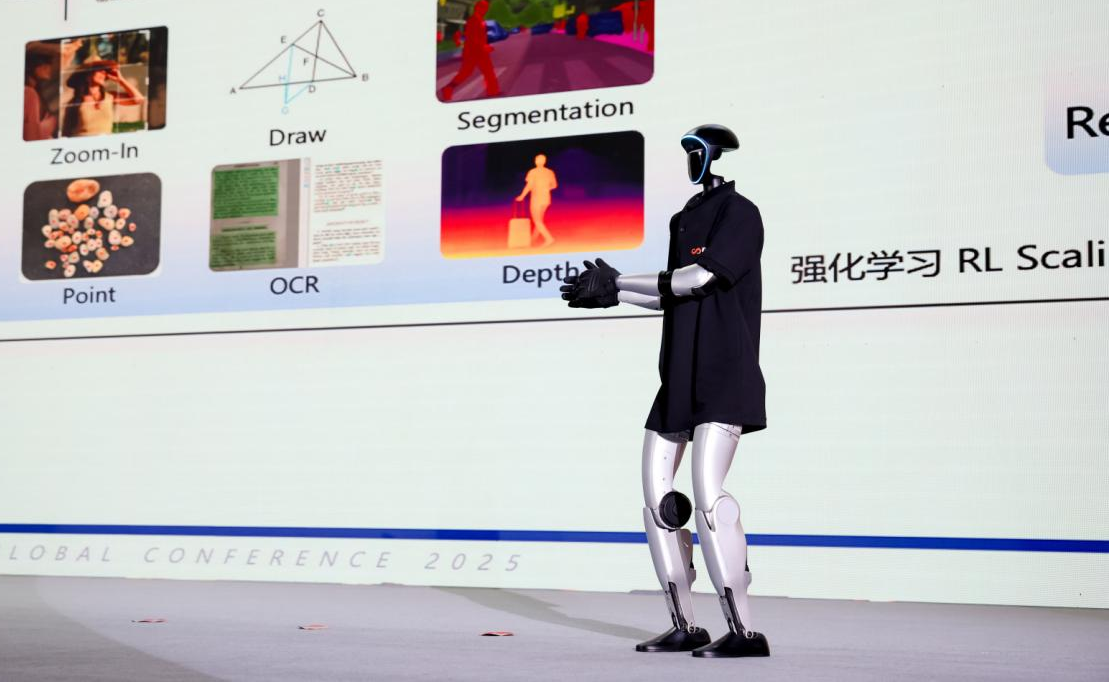by Wang Kai
SHENZHEN, Nov 11 (China Economic Net) - "This year marks the beginning of large-scale adoption of AI large models across industries, signaling a global shift as the technology moves from proof-of-concept to commercial deployment," highlighted the Global Computing Power Trends Report (2026), released last week at the Global Computing Conference in Shenzhen, China. According to Liu Zhihong, Council Member of Global Computing Consortium (GCC), the organizer of the event, AI is expected to expand the global economy by 15% in the next decade.
“For China, that translates to an additional 11 trillion yuan in GDP,” he said.
This momentum stems from China’s rapid expansion of computing infrastructure. Data from the China Artificial Intelligence Computing Power Development Evaluation Report show that in 2024, China’s intelligent computing capacity reached 725.3 EFLOPS, up 74.1% year-on-year. The market for AI computing reached 19 billion U.S. dollars, expanding by nearly 87% over the previous year.

Humanoid robot displayed at Global Computing Conference 2025 held in Shenzhen, China [Photo provided by Global Computing Conference]
Shao Guanglu, Executive Deputy Director of the Expert Advisory Committee of the Internet Society of China, said that between 2024 and 2028, China’s computing capacity is projected to grow by more than 40 percent annually, effectively doubling every two years. As AI becomes integrated across industries, he noted, inference power—the kind used for real-world decision-making—will make up over 70 percent of total computing capacity by 2028.
China’s data industry is expanding in parallel. According to the National Data Development Research Institute, by 2024 the country had over 400,000 data enterprises and a total industry output of 5.86 trillion yuan, up 117 percent from 2020. Data production reached 41.06 zettabytes—more than double that of five years earlier and accounting for 26.7 percent of global output.
By mid-2025, China had deployed 10.85 million standard server racks in its computing centers and achieved storage capacity exceeding 1,680 exabytes, a year-on-year increase of about 40 percent. The country has also released 1,509 large AI models, among the highest numbers worldwide.

Robot vs. human in Gobang [Photo/China Economic Net]
AI is already transforming the daily lives of Chinese people. Robots are now delivering parcels within local communities, covering the last mile of logistics. Robot marathons and boxing tournaments are drawing public attention, showcasing advances in embodied intelligence. In smart homes, AI assistants have become indispensable, enabling users to control their living environments remotely and automatically—adjusting thermostats, checking security cameras, or managing lighting systems through voice commands. These intelligent devices are also playing growing roles in household chores, elder care, education, and healthcare. A recent survey found that 63 percent of homeowners in China now use at least one smart device.
Intensive research has become the backbone of China’s AI ascent. According to Times Higher Education, China now produces more AI-related research than the United States, the United Kingdom, and the European Union combined. Paulo Lopes, China Country Head of the Institution of Engineering and Technology (IET) in the U.K., noted that nearly 58 percent of IET’s academic papers now come from Chinese researchers—a leap from just around 5 percent a decade ago.
Policy support is accelerating this trend. In August 2025, China’s State Council issued guidelines on advancing the “AI Plus” initiative, setting a goal for new-generation smart terminals and intelligent agents to achieve a 70 percent adoption rate by 2027, and to exceed 90 percent by 2030.
Industries are also being reshaped by embodied intelligence—the integration of AI with robotics and physical systems. By mid-2025, more than 83 financing deals had been completed globally in this sector, totaling 14 billion yuan, with Chinese firms accounting for 60 percent of the total. By October 2025, 50 industrial parks dedicated to embodied intelligence had been established across China, supported by local governments in Beijing, Shenzhen, Shanghai, and Hangzhou. The country also holds 60 percent of the world’s AI-related patents, underscoring its emergence as a center of innovation.
Liu Yu, Associate Researcher at the Shenyang Institute of Automation under the Chinese Academy of Sciences, said embodied AI is already making inroads in precision manufacturing, new energy vehicle production, and special equipment. “Our advantage lies in China’s complete industrial ecosystem,” he said. “Enterprises and institutions are willing to invest heavily in research with us and then deploy these technologies directly on their production lines. China’s complete industrial categories offer diverse scenarios for applications. That’s a unique strength of China’s innovation model.”
Behind these developments lies a national push toward openness. While leading U.S. firms focus on technological breakthroughs and the European Union emphasizes ethics and academic research, China is driving rapid iteration through an open-source ecosystem. The Global Computing Consortium recently launched Open AI Infra, the country’s first open community for AI infrastructure, to strengthen cooperation among developers and researchers.
Heiko Schick from Huawei emphasized that openness is vital to future progress. “Large language models and edge AI represent the future,” he said. “The global economy should embrace open architectures, standards, specifications, and open-source products to maximize innovation.”
Experts believe China’s AI rise presents opportunities for deeper international collaboration. Paulo Lopes said that China and the UK can work together to align ethical standards, sustainability goals, and green technology innovation. “AI can help optimize renewable energy systems and reduce carbon emissions,” he said. “Joint research, inclusive governance, and support for developing countries in disaster resilience and sustainable urban planning are crucial for a balanced global AI future.”
(Editor: wangsu )


